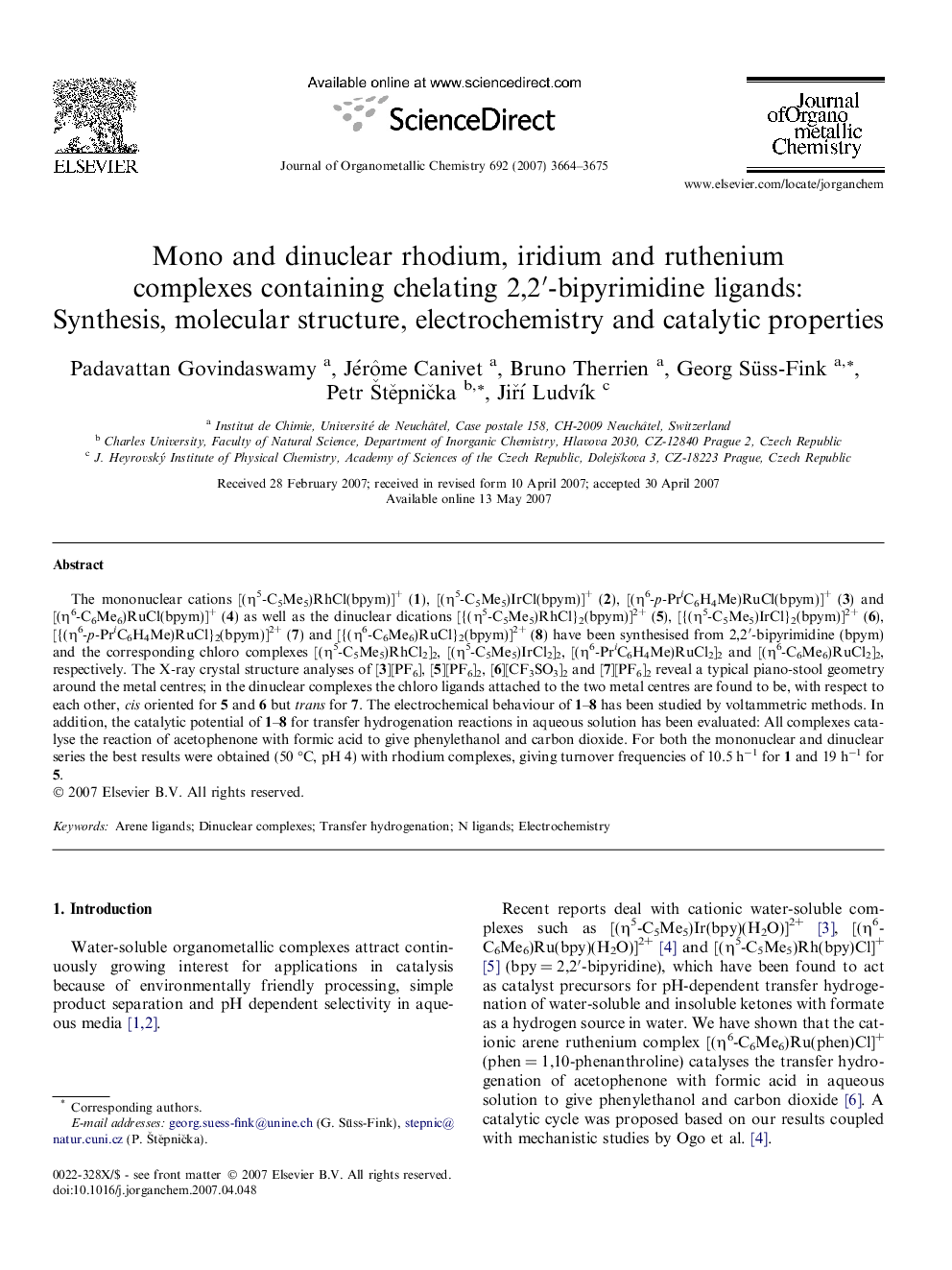| کد مقاله | کد نشریه | سال انتشار | مقاله انگلیسی | نسخه تمام متن |
|---|---|---|---|---|
| 1326521 | 977435 | 2007 | 12 صفحه PDF | دانلود رایگان |

The mononuclear cations [(η5-C5Me5)RhCl(bpym)]+ (1), [(η5-C5Me5)IrCl(bpym)]+ (2), [(η6-p-PriC6H4Me)RuCl(bpym)]+ (3) and [(η6-C6Me6)RuCl(bpym)]+ (4) as well as the dinuclear dications [{(η5-C5Me5)RhCl}2(bpym)]2+ (5), [{(η5-C5Me5)IrCl}2(bpym)]2+ (6), [{(η6-p-PriC6H4Me)RuCl}2(bpym)]2+ (7) and [{(η6-C6Me6)RuCl}2(bpym)]2+ (8) have been synthesised from 2,2′-bipyrimidine (bpym) and the corresponding chloro complexes [(η5-C5Me5)RhCl2]2, [(η5-C5Me5)IrCl2]2, [(η6-PriC6H4Me)RuCl2]2 and [(η6-C6Me6)RuCl2]2, respectively. The X-ray crystal structure analyses of [3][PF6], [5][PF6]2, [6][CF3SO3]2 and [7][PF6]2 reveal a typical piano-stool geometry around the metal centres; in the dinuclear complexes the chloro ligands attached to the two metal centres are found to be, with respect to each other, cis oriented for 5 and 6 but trans for 7. The electrochemical behaviour of 1–8 has been studied by voltammetric methods. In addition, the catalytic potential of 1–8 for transfer hydrogenation reactions in aqueous solution has been evaluated: All complexes catalyse the reaction of acetophenone with formic acid to give phenylethanol and carbon dioxide. For both the mononuclear and dinuclear series the best results were obtained (50 °C, pH 4) with rhodium complexes, giving turnover frequencies of 10.5 h−1 for 1 and 19 h−1 for 5.
A series of mono and dinuclear organometallic cations have been synthesised from 2,2′-bipyrimidine (bpym) and the corresponding chloro complexes [(η5-C5Me5)MCl2]2, (M = Rh, Ir), and [(η6-arene)RuCl2]2 (arene = PriC6H4Me, C6Me6). On the basis of a structural and electrochemical characterisation, the catalytic potential of these complexes for transfer hydrogenation reactions has been studied. All complexes catalyse the reaction of acetophenone with formic acid to give phenylethanol and carbon dioxide. The best results were obtained (50 °C, pH 4) for both the mono and dinuclear series with rhodium complexes, giving turnover frequencies of 10.5 h−1 and 19 h−1, respectively.Figure optionsDownload as PowerPoint slide
Journal: Journal of Organometallic Chemistry - Volume 692, Issue 17, 1 August 2007, Pages 3664–3675